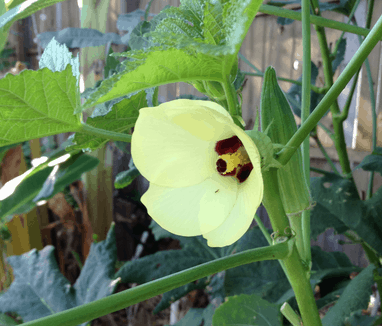
Project News
Sahib Aquaponics : What shall we grow today?
Okra – aka “Ladies Fingers”, “Kingombo”, “Gumbo” and “Bhindi”
During the last two years or so, I have found that you can grow almost any vegetable and plants that you choose to in Aquaponics. You may need to adapt the grow beds and practice hybrid aquaponics as I do to increase your range of products. I have successfully grown broccoli, carrots, eggplants, daikon and radishes, fennel, fruit trees, kohlrabi, herbs, okra, onions, pumpkins, marrows, gourds, tomatoes, strawberries, peppers – hot & sweet just to name some. I have also seen others grow corn and some even sweet potatoes via wicking beds. One really needs to expand their horizon and realize that there are really very few items that will not grow well in Aquaponics systems. Yes there are a few items that are just not cost effective at present such as grains and rice. There is research being done on these products and I am sure that very soon these too will become economic to grow via Aquaponics means.
Today I am going to write about one of my wife’s favorite items that we grow at Sahib Aquaponics, Okra. We call it by the Hindi/Urdu Name Bhindi. This much loved vegetable is a favorite of many and is usually grown in hot weather, one of the few that does not wilt and die as the temperatures rise. The green pods when cooked release a “goo” or slime which is considered by many to be beneficial to health. Okra can be eaten raw, boiled, fried, sautéed, stir fried, stuffed, and included in stews. The leaves can also be eaten, usually in salads.
Okra plants can grow up to 9 feet tall and with uncut Okra fruit, can weigh a lot hence they are not good candidates for “raft” Aquaponics. They are better suited to deep media beds preferably containing 3/4inch rocks. Grow them direct from seed and avoid the transplant shock. Although I have grown a hybrid variety from saved seeds, I do prefer to grow the “Clemson Spineless”. Each plant may only have one or two Okra pods maturing at any one time and you should pick these often. Try to pick the pods when they are 3 to 5 inches, although I must confess that in Aquaponics, they tend to grow that almost every day! If I forget to pick them for a couple of days, they have grown to 10 to 11 inches tall and fat as a cucumber. Hat is not always a good idea as letting them grow to a larger size tends to make them woody and lose their taste. My Aquaponically grown Okra are honestly the very best tasting “Bhindi” that I have ever eaten. When planting Okra you do need a lot of room as you should plant a number of plants if you would like to be able to harvest enough pods for a meal once or twice a week.
You can eat Okra right off the plants or cook them in numerous ways. They can also be frozen or pickled. You can cut them in ¼” to ½” pieces and stir fry then with onions and spices, or coat them with seasoned corn meal and deep fry them. They can be stuffed with spices, other stuffing or even cooked ground meat and then stir fried. Gumbo is another way to eat Okra. In order to get the maximum health benefits of Okra, try to avoid over cooking it and avoid deep frying. Okra is an excellent source of many nutrients such as Vitamin A, Vitamin B6, Vitamin C, Calcium, Copper, Iron, Potassium, Magnesium, Niacin, Zinc as well as containing Folic Acid. It is considered a weight loss food with optimum health benefits. The fibers found in Okra are supposed to help stabilize bold sugar, improve the functioning of the intestinal tract and help provide the body with good bacteria for the digestive system.
I have found the following web article on Okra to be helpful and am sharing it with you http://www.neurophys.wisc.edu/ravi/okra/ It also contains some recipes. I will request my daughter to include some Indian Bhindi recipes on her Blog www.lovelaughmirch.com
Okra!
“Is it profitable?”
In Pure Economics 101 terms, it all depends! If you live in very hot climates like Central Florida, your choice of produce to grow for market is limited during the hot summer. If you have the space and the appropriate Aquaponics set-up, growing Okra during the hot season and provide you with a stream of income that was non-existent during this hot period of the year. If you had a fifty foot long by 4 foot wide media filled grow bed area, so 200 sq. ft. space, you should be able to plant at least 120 plants – spacing them 12” to 15” apart. Once they start to produce fruit, you should be able to harvest approx. 30lbs to 40lbs weekly. Organic Okra, if available (and you know as you will hopefully educate your customer that Aquaponically grown is much superior), was selling for $2.99-$3.50/lb at the local farmer’s market. Say if you have a 20 week production harvest that could result in $3,000.00 plus additional income. Not as much as one could earn if growing tomatoes or green leafy veggies. However you could not grow them in this hot climate without some serious climate control environment! By the way, you can still grow basil, mint, hot peppers and gourds / melons in the open space of the media grow beds thus further add to you farm income.
As to whether it is “profitable” from a health point of you, this is going to be your decision. Let me help you a little. Growing them by aquaponics means ensures that you are assured the best natural taste. As I was quoted in the recent article in Cornell University Small farm Program Newsletter – the Urban Gardening section “This was a far superior way to grow it locally, grow it naturally, without having to resort to harmful pesticides and fertilizers and such, because if I did, my fish would die.” I have listed just some of the health benefits of Okra. Do you know, this is one vegetable that is so valued in Indian cuisine that had resulted in India becoming the largest grower of Okra. Ayurvedic medicine states numerous health benefits of eating Okra. Here is another link detailing information on Okra as a “Body Cleanser” http://www.ehow.com/about_5471466_information-okra-body-cleanser.html
In future “What shall we grow today?” article’s I will write about some of the vegetables mentioned above as well some other less known such as Bitter Melon (Kerela), Fenugreek (Methi), Malabar Spinach and Moringa (Drumsticks). Please let me know if there are any vegetables you would like to grow in Aquaponics and know more about them.
http://nutritiondata.self.com/facts/vegetables-and-vegetable-products/2497/2
God bless
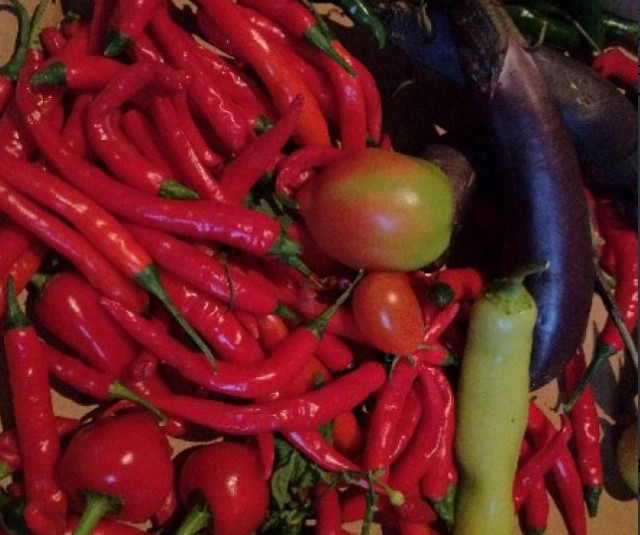
Project News
Sahib Aquaponics – What shall we grow today?
Hot Peppers
A question that I am often asked is “Other than the lettuces and leafy greens, what else can you grow in Aquaponics?” That is then followed by, “Is it profitable?”
During the last two years or so, I have found that you can grow almost any vegetable and plants that you choose to in Aquaponics. You may need to adapt the grow beds and practice hybrid aquaponics as I do to increase your range of products. I have successfully grown broccoli, carrots, eggplants, daikon and radishes, fennel, fruit trees, kohlrabi, herbs, okra, onions, pumpkins, marrows, gourds, tomatoes, strawberries, peppers – hot & sweet just to name some. I have also seen others grow corn and some even sweet potatoes via wicking beds. One really needs to expand their horizon and realize that there are really very few items that will not grow well in Aquaponics systems. Yes there are a few items that are just not cost effective at present such as grains and rice. There is research being done on these products and I am sure that very soon these too will become economic to grow via Aquaponics means.
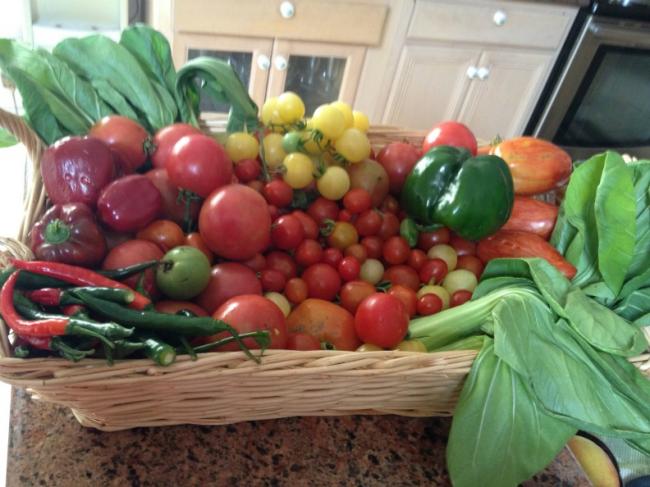
Today I am going to write about one of my favorite items that we grow at Sahib Aquaponics, part of the hot pepper family – Cayenne Peppers. In future posts I will write about other items that we successfully grow in our hybrid aquaponics systems and provide some information as to the benefits of consuming such and recipes of how we cook with them.
Cayenne Peppers!
“Is it profitable?” Really!
Let me answer the question “Is it profitable?” first in pure economics terms. According to recent articles (April 17, 2012), “The Top Ten Fastest-Growing Industries in America”, and and “The Hot Sauce Treadmill”, Hot Sauce Production is part of this group! I use a variety of chili peppers (also known as “Mirch” in India), especially Cayenne, in virtually all my cooking and will always have hot sauce handy. Today there are numerous hot sauces on display at various eating establishments. Just look at the supermarket isles when you next visit. This trend is expected to increase as our tastes change and adapt to more of an international cuisine and we build a tolerance to the capsaicin-rich foods. The market is expected to grow close to 5% annually, so yes, growing Hot Peppers can be economically profitable. Growing them by aquaponics means ensures that you are assured the best natural taste. As I was quoted in the recent article in Cornell University Small farm Program Newsletter – the Urban Gardening section “This was a far superior way to grow it locally, grow it naturally, without having to resort to harmful pesticides and fertilizers and such, because if I did, my fish would die.”
As to whether it is “profitable” from a health point of you, this is going to be your decision. Let me help you a little. I am sure that you are aware of the toxic effects of eating food that has been grown by using harmful pesticides and chemical fertilizers. Growing Chili peppers in Aquaponics, whether Cayenne or one of the other 400 varieties, eliminates the harmful pesticides or chemical fertilizers so prevents this source of toxins to your body. There is considerable research available to you as to the health benefits of eating chili peppers. Cayenne peppers are being used to cleanse and detoxify the digestion system, stimulate blood circulation as well as reduce & naturalize acidity in the body. They are considered to be anti-inflammatory and have “been used for a variety of diseases and ailments including heartburn, delirium, tremors, gout, paralysis, fever, dyspepsia, flatulence, sore throat, atonic dyspepsia, hemorrhoids, menorrhagia in women, nausea, tonsillitis, scarlet fever and diphtheria.” Dr. Edward Group -17 Health Benefits of Cayenne Pepper. They also have excellent nutritional value. “Red chilies contain high amounts of vitamin C and carotene (provitamin A). Yellow and especially green chilies (which are essentially unripe fruit) contain a considerably lower amount of both substances. In addition, peppers are a good source of most B vitamins, and vitamin B6 in particular. They are very high in potassium, magnesium, and iron. Their high vitamin C content can also substantially increase the uptake of non-heme iron from other ingredients in a meal, such as beans and grains.” Now you can see why chili peppers are considered as being an essential item in good health, part of the “Spice of Life” club.
I like the taste of Cayenne peppers so have a preference to using them often. We eat them fresh in salads or add them to my food (green or red), as well as dry them for use later, either as whole or powdered. Indian food just would not taste as good without adding chili peppers (mirch). My daughter has even named her food blog “Love Laugh Mirch”. Now I realize that eating chili’s can be difficult for many who have never had any hot spice added to their food. All I can suggest is, try to add a little hot sauce or fresh chili pepper (remove the seeds at first), to your food. You will soon really start to enjoy the sensation and crave for more. Pretty soon, you too will be advocating their use and growing as many of them as possible. Welcome on board
[nggallery id=10]
I was surprised to discover that chili peppers did not originate in India as Black Pepper (also known as “Black Gold”), but in the Americas. Christopher Columbus is credited as being one of the first Europeans to encounter them and called them “peppers” as they tasted spicy and hot, unlike any other food. He thought that he had reached India by sailing west in order to prove that earth was round. How the Chili Peppers travelled to India is still being debated, whether by Portuguese traders, Muslim merchants or Chinese silk merchants. Once they arrived in India, they were welcomed and became part of everyday food and being used in Ayurveda medicines.
In future “What shall we grow today?” article’s I will write about some of the vegetables mentioned above as well some other less known such as Bitter Melon (Kerela), Fenugreek (Methi) and Moringa (Drumsticks). Please let me know if there are any vegetables you would like to grow in Aquaponics and know more about them. You can contact me at sahib@sahibaquaponics.com.
God bless
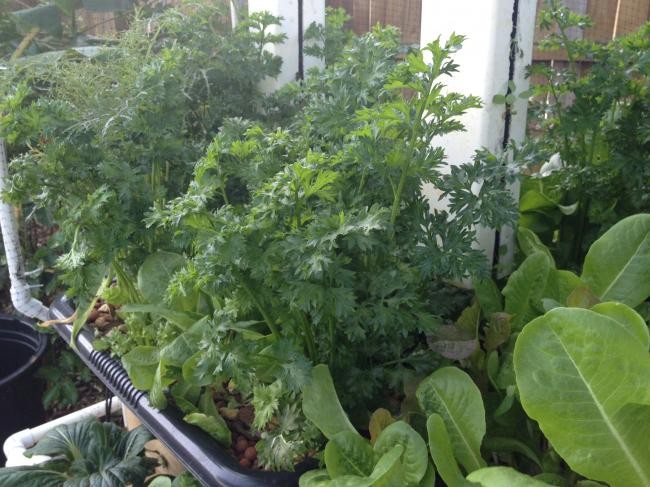
Project News
Sahib Aquaponics Zero Lot Hybrid Aquaponics System was recently highlighted as being “A Good Fit For Small Spaces”. This was an article in Cornell University Small Farm Program Newsletter – the Urban Gardening section.
Here is an extract from the article by Molly Davis…
“A Good Fit for Small Spaces
In suburban Orlando, Florida, farmer Sahib Punjabi has developed several models of miniature re-circulating farms to fit in small, underused spaces, such as storage rooms and patios. In only 18 square feet, Punjabi’s “Zero Lot” Backyard Aquaponic System combines a variety of plant beds with a 55-gallon fish tank.
He aims to build a totally self-sufficient system that can be deployed anywhere, from developing-world villages to U.S. neighborhoods.
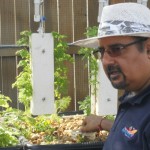


“This was a far superior way to grow it locally, grow it naturally, without having to resort to harmful pesticides and fertilizers and such, because if I did, my fish would die,” said Punjabi. Goldfish require less oxygen than many food fish, but still supply enough fertilizer to nourish lettuces, herbs, and vegetables. Punjabi uses a variety of bedding materials.
“The whole idea is that the plants absorb nutrients from the water so that pure water goes back to the fish tanks,” said Punjabi.
A single 50-watt pump circulates the water through pipes. Valves control the inflow into the beds. Punjabi emphasizes the importance of maintaining the water chemistry, especially the pH and the nitrogen cycle.”
You can read the complete article here:
SAHIB AQUAPONICS is providing training workshops for community members and students around the U.S., interested in learning innovative methods and market-based solutions using urban agriculture and Aquaponics. Sahib will share with you the endless possibilities of how to grow your own food locally and naturally without the use of harmful pesticides and chemical fertilizers by using these Aquaponics hybrid urban growing systems.These Aquaponics hybrid urban growing systems can be scaled to size and can be replicated. They can be modified to be operated off grid as well as expanded as the need arises. Such systems can be used to have fresh food at home, work or anywhere they are set up. They are excellent tools to use as teaching aids so that we can empower the future generation with the knowledge to grow their own food locally by natural means. Sahib’s Aquaponics hybrid urban growing systems can be the basis of feeding the family, the community as well as provide income to the urban farmer. Sahib will also share how such systems can be used in urban retail economy, both by food establishments as well as food/produce retail outlets to enable the consumer to purchase food that has been grown locally and by natural means. Food that is “live” (a new twist on the label “Fresh”), and the type recommended by most medical and health professionals as what we should be eating.
2012 Aquaponics training workshops by Aquaponics Urban Gurus
Next Aquaponics Workshop: June 9th & 10th 2012
These Aquaponics Workshops by Aquaponics Urban Gurus are an excellent place to learn Aquaponics and be empowered to build Aquaponics systems to grow organic food for their family without using harmful pesticides or chemical fertilizers, discover the potential to create another income source as well share such knowledge with many more to help provide sustainable solutions to the world hunger epidemic.
Sahib believes that such training should be affordable so as to enable all sectors of the society to educate and empower themselves in this wonderful way of growing organic food. He also believes in smaller class sizes (not to exceed 20 participants), so that the Workshop training can be personalized as much as possible. By being a participant in such Aquaponics workshops, you will really learn and be empowered to grow your own food locally and naturally.
Space is extremely limited so reserve your space now
Sahib’s Training Workshops by Aquaponics Urban Guru’s
Here is a recent e-mail from one of the Workshop participants…
“Hello Sahib,
I really enjoyed your 2 day Aquaponics class. It was very informative and practical. You made what seemed like complicated gardening into a fun learning experience. Your explanations made it easy to comprehend the principles behind Aquaponics. Seeing your Aquaponics garden and your simple systems setup demonstration, removed all doubts. Even though I am a beginner, I am confident that I can do this now. It opened up a whole new world of providing healthy “organic” food for myself and others. An excellent job done! I will recommend you classes to everyone. Rajaji “
God bless,
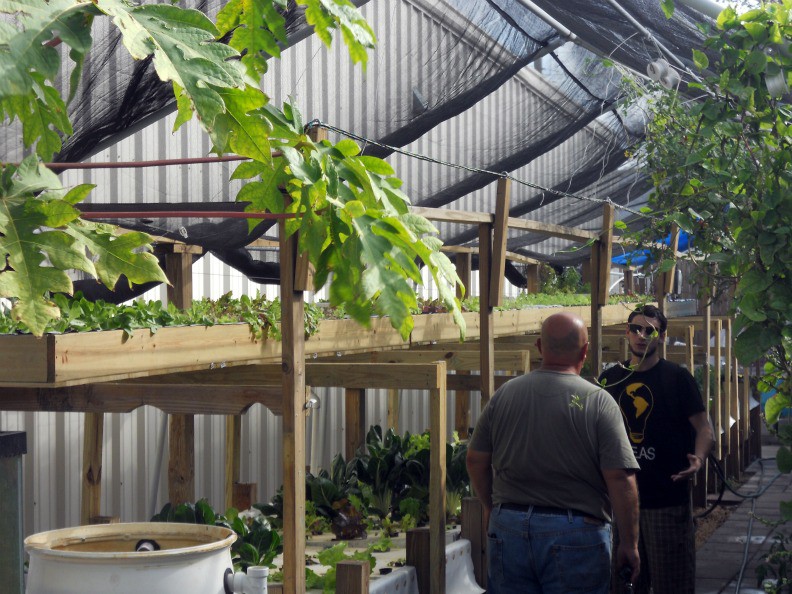
Project News
Aquaponics News – Update
Sahib replaces NFT’s in Phase I with Vertical Shallow Water Culture (SWC)
In the original design of Phase I at Sahib Aquaponics Research Farm, Sahib introduced NFT’s made of 3 inch PVC pipe. They were three 48ft long NFT’s mounted over the deep water culture (DWC), grow bed. They were installed in late September 2010 and were watered by the effluent rich fish water using the same pump as that watered the DWC. During the initial months we experienced fantastic growth of whatever we planted and never had any issues as regards clogging and water flow constraints. During the summer last year, after they had been in operation for just under one year, we started to have considerable issues with clogging, sediment settling at the bottom of the pipes and water overflows. We also noticed that there was a significant change in the water temperature towards the end of the 48ft NFT’s. Needless to say, we experienced a significant reduction in the growth yields and times of anything planted. We also realized that if we left any plants for some time in the NFT’s, the root system would seriously compound to the water flow issues. We wanted to be able to increase aeration in the growing area but could not do so in the NFT’s and found it difficult to clean them. Perhaps if they were built in smaller lengths, such problems would have been easy to address. What was the solution to still be able to maximize the growing space in the waste land Sahib Aquaponics Research Farm is located in?
As we were building Phase II, what we jokingly refer to as “Vertical Mania”, we designed a Shallow Water Culture bed (SWC) with the following dimensions; 6 inches deep, 2 feet wide and 12 foot long. This gave us a bed with a maximum water capacity of under 100 gallons, thus with wood, a total weight load around 1,000lb. With the 2 inch raft, the actual amount of water in the SWC would be less than the 100 gallons thus the lower weight could make its vertical suspension possible. The additional amount of water would allow increased aeration and the short length of the SWC would keep the water temperature more stable. The SWC would be ideal for plants that did not require long harvests or have extensive root systems. We installed our first vertical SWC in Phase II in late November 2011 and have experienced fantastic results. We have proceeded to design and install a two level SWC system and are working on a three level system to increase the overall growing capacity in a limited space. Given the advantages of SWC, Sahib decided to remove the NFT’s and utilize them elsewhere in shorter lengths and replace them with four SWC’s. We have included some photos of the changes below. We will post more at a later date and report of any issues or problems.
SAHIB AQUAPONICS is a Florida, USA domiciled corporation and is a pioneer in developing and building Aquaponics hybrid urban growing systems for sustainable urban gardening. The company specializes in Aquaponics and in the promotion of sustainable urban gardening and the establishment of such Ecosystems. Their mission is to strive to be at the forefront of sustainable urban gardening by adopting the latest Aquaponics technologies and growing methods to provide both high quality food and fish, competitively priced, grown locally and grown naturally. SAHIB AQUAPONICS is providing training workshops for community members and students around the U.S., interested in learning innovative methods and market-based solutions using urban agriculture and Aquaponics.
As promised, we are also sharing some photos of the Zero Lot / Backyard Gardener Aquaponics Hybrid System that we introduced at the last Aquaponics Workshop on December 10th & 11th 2011. There are now SIX different growing methods being used by this small system. What a fantastic system to have in your own Zero Lot or Backyard. Sahib will share with you the endless possibilities of how to grow your own food locally and naturally without the use of harmful pesticides and chemical fertilizers by using these Aquaponics hybrid urban growing systems. These Aquaponics hybrid urban growing systems can be scaled to size and can be replicated. They can be modified to be operated off grid as well as expanded as the need arises. Such systems can be used to have fresh food at home, work or anywhere they are set up. They are excellent tools to use as teaching aids so that we can empower the future generation with the knowledge to grow their own food locally by natural means. Sahib’s Aquaponics hybrid urban growing systems can be the basis of feeding the family, the community as well as provide income to the urban farmer. Sahib will also share how such systems can be used in urban retail economy, both by food establishments as well as food/produce retail outlets to enable the consumer to purchase food that has been grown locally and by natural means. Food that is “live” (a new twist on the label “Fresh”), and the type recommended by most medical and health professionals as what we should be eating.
2012 Aquaponics training workshops by Aquaponics Urban Gurus
Following the successful inaugural Aquaponics training workshops by Aquaponics Urban Gurus, Sahib Aquaponics will be holding numerous Aquaponics Workshops in 2012. These Aquaponics Workshops by Aquaponics Urban Gurus are an excellent place to learn Aquaponics and be empowered to build Aquaponics systems to grow organic food for their family without using harmful pesticides or chemical fertilizers, discover the potential to create another income source as well share such knowledge with many more to help provide sustainable solutions to the world hunger epidemic.
Sahib believes that such training should be affordable so as to enable all sectors of the society to educate and empower themselves in this wonderful way of growing organic food. He also believes in smaller class sizes (not to exceed 16 participants), so that the Workshop training can be personalized as much as possible. By being a participant in such Aquaponics workshops, you will really learn and be empowered to grow your own food locally and naturally.
Here is a recent e-mail from one of the Workshop participants…
“Hello Sahib,
I really enjoyed your 2 day Aquaponics class. It was very informative and practical. You made what seemed like complicated gardening into a fun learning experience. Your explanations made it easy to comprehend the principles behind Aquaponics. Seeing your Aquaponics garden and your simple systems setup demonstration, removed all doubts. Even though I am a beginner, I am confident that I can do this now. It opened up a whole new world of providing healthy "organic" food for myself and others. An excellent job done! I will recommend you classes to everyone.
Rajaji “
Sahib is using the profits from Aquaponics training workshops by Aquaponics Urban Gurus to fund the development of Aquaponics for the poor hungry world villages. He has set up a separate group for this called “Feed Hunger Now” (see link below). Will you help join Sahib…can we work together in this venture? What ideas do you have to help towards this goal?
http://www.feedhungernow.org/
God bless,
Sahib promises to share with you the designs and pictures of Sahib’s Aquaponics Hybrid Urban Growing Systems.
The Hobby / Nano System
The Balcony / Patio System
The Zero Lot / Backyard Gardener
The Urban Farmer / Community Gardener
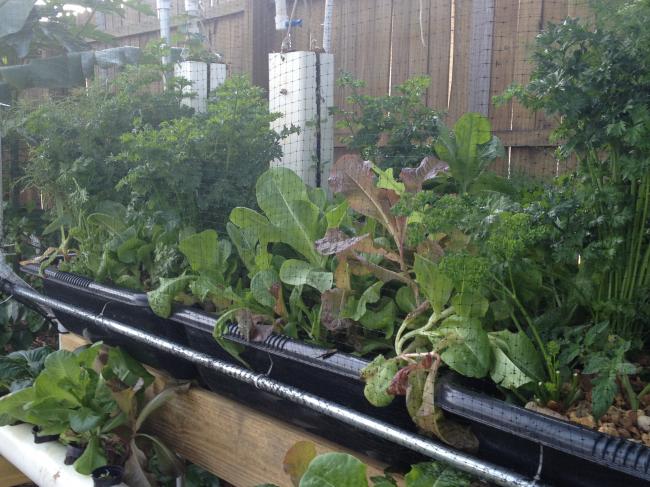
Project News
Aquaponics News
Aquaponics Hybrid Urban Growing Systems introduced by Sahib Aquaponics
Sahib Aquaponics held their inaugural Aquaponics training workshops by Aquaponics Urban Gurus on December 10th, 2011. The Aquaponics Workshops were very well received by all who participated and hopefully the world will have another few people who will build Aquaponics systems themselves, enjoy this way of life and then share such knowledge with many more to help provide sustainable solutions to the world hunger epidemic. Reflecting at the end of the workshop, the question was asked as to what constitutes “success” to Sahib?
Tim Mann of Friendly Aquaponics recently wrote…"To Sahib what the word “success” means is that most (if not ALL) of the participants in the courses go out, build and operate aquaponics systems with the knowledge empowered that Sahib has imparted during the course to help end world hunger". Needless to say, I was very happy to read the following e-mail from one of the Workshop participants…
“Dear Sahib, Just a quick note to again thank you for an interesting and educational two days. We enjoyed it very much and our eyes were opened to a new concept. We are already trying to locate the necessary items to build a system much like the one you demonstrated. Keep up the good work! Best wishes, Clyde and Trudy Edwards”.
The Aquaponics hybrid urban growing system that Sahib demonstrated during the Aquaponics Urban Gurus Workshop was a prototype. Over the course of the next few weeks, Sahib will share with you the endless possibilities of how to grow your own food locally and naturally without the use of harmful pesticides and chemical fertilizers by using these Aquaponics hybrid urban growing systems. These Aquaponics hybrid urban growing systems can be scaled to size and can be replicated. They can be modified to be operated off grid as well as expanded as the need arises. Such systems can be used to have fresh food at home, work or anywhere they are set up. They are excellent tools to use as teaching aids so that we can empower the future generation with the knowledge to grow their own food locally by natural means. Sahib’s Aquaponics hybrid urban growing systems can be the basis of feeding the family, the community as well as provide income to the urban farmer. Sahib will also share how such systems can be used in urban retail economy, both by food establishments as well as food/produce retail outlets to enable the consumer to purchase food that has been grown locally and by natural means. Food that is “live” (a new twist on the label “Fresh”), and the type recommended by most medical and health professionals as what we should be eating.
"The Zero Lot / Backyard Gardener" System
This was the Aquaponics hybrid urban growing system that Sahib shared with the Workshop participants. We introduced two growing methods, one based upon the raft system and the other using media beds. We explained the different medias that could be used as well as explaining them how to mix media to assist in the planting of seedlings. Workshop participants gained hands on experience in the assembly process as well as seeing the complete system operate. They were shown the beauty and functionality of using the bell siphons (we used a modified design based upon Affnan's design), to aid in the aeration process. Workshop participants were requested to assemble a similar Aquaponics hybrid urban growing system and begin to grow food for themselves. Over the course of the next few weeks, we will add vertical towers ("Sahib Sandwich Towers") over the media beds, add an NFT system as well as introduce re-circulating media beds. In due course we will add some containers to be watered on occasions by the fish effluent water. As the fish grow in size or an additional fish tank is added, we will add additional raft beds to dramatically increase the overall growing capacity. The system will be designed to have a canopy to allow shade cloth as well as cover to collect rainwater for recycling. A small solar system will also be introduced so as to be able to operate the complete system off grid. We will post photos as we build and incorporate such additions.
These are the types of systems that Tim Mann was referring to when he wrote… “Sahib is dedicated to “feeding the villages” of the world, are his words for teaching the poorest people in the world how to feed themselves using aquaponics. He is developing Aquaponics systems in Winter Park, Florida, that are the prototypes for affordable systems that will be appropriate for economically disadvantaged and developing nations.” Sahib’s Aquaponics hybrid urban growing systems will be engineered to enable them to be built completely by locally sourced materials as well as complete packages so as to meet different needs and wants. This should ensure that they are affordable systems for the economically disadvantaged, where ever the need is, thus helping provide a sustainable solution to the world hunger epidemic. Water conservation, use of green technology, reducing the carbon footprint while providing a sustainable solution to help develop ecosystems and sustainable living food jungles thus helping reduce, perhaps even eliminate hunger, are just some of the goals and end results of Sahib’s aquaponics hybrid urban growing systems.
Sahib is accomplishing this in the most interesting place ever seen on an Aquaponics farm: in the “dead space” of a suburban strip mall in Winter Park, near Orlando in Central Florida. Recently an experienced Aquaponics gardener commented…” all the improvements that have been occurring at the "Urban Wasteland"… Now it has been transformed into a beautiful and productive "Urban Farmland"!” Tim Mann comments…” This is not only innovative on Sahib’s part, but perhaps prescient also. Although the politicians all say “we’re on the road to recovery”, there are others who talk of going back to basics and being responsible for our own food security. I can’t think of a better use for a lot of those empty strip malls we see nowadays: imagine housing the farming community in the buildings and growing the food in the empty parking lots!”
Sahib is using the profits from Aquaponics training workshops by Aquaponics Urban Gurus to fund the development of aquaponics for the poor hungry world villages. He has set up a separate group for this called “Feed Hunger Now” (see link below). Will you help join Sahib…can we work together in this venture? What ideas do you have to help towards this goal?
http://www.feedhungernow.org/
God bless,
Over the course of the next few weeks, Sahib will share with you the designs and pictures of Sahib’s Aquaponics Hybrid Urban Growing Systems.
The Hobby / Nano System
The Balcony / Patio System
The Zero Lot / Backyard Gardner
The Urban Farmer / Community Gardner


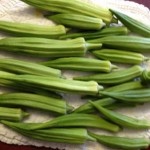
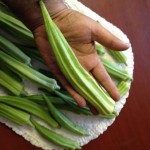
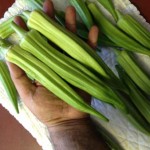
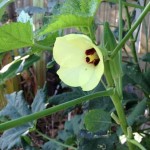
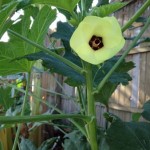
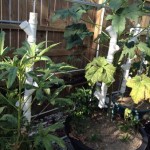
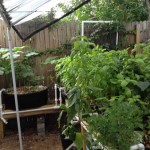
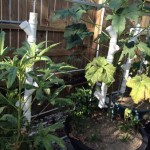
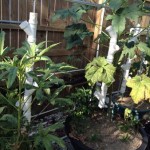







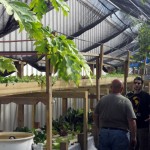
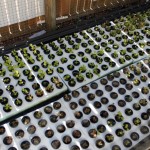
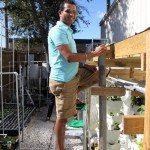
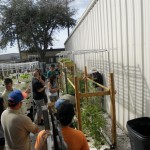
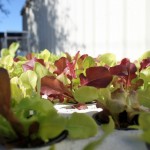
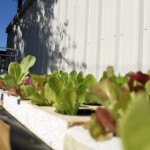
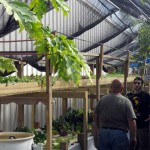
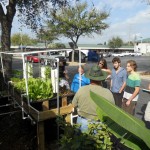
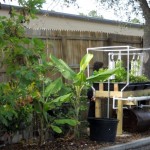
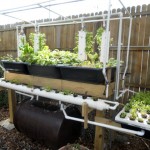
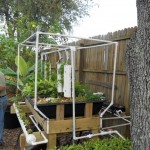
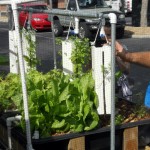
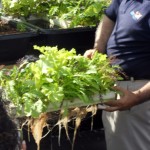
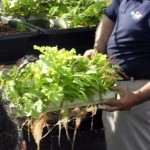
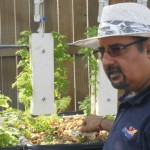

 Best Western Orlando East Inn & Suites
Best Western Orlando East Inn & Suites Crestwood Suites of Orlando-UCF Area
Crestwood Suites of Orlando-UCF Area Days Inn N Orlando/Casselberry
Days Inn N Orlando/Casselberry Park Plaza Hotel
Park Plaza Hotel Thurston House Bed and Breakfast
Thurston House Bed and Breakfast